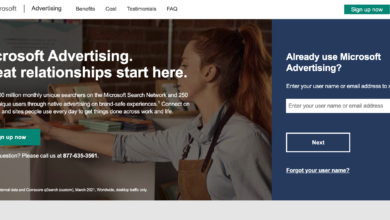7 Ways To Segment Your Audience For Successful Retargeting

If marketing is the art of persuasion, then retargeting is that art at its best.
A user who has expressed interest in our brand, products or services can be considered as a potential customer. Therefore, you can expect that – with the right approach – our chances of conversion are greater than when marketing to a lead.
However, no matter how warm our lead may be, a strategic approach is key to closing the deal.
This is where it is necessary to use all available information about your users and how he/she interacts with your brand.
[Related] Get new SaaS customers with the right content formats →
Why do we segment audiences for retargeting
Information like demographics, which channel the lead was sourced from, whether the engagement was on-site or off-site, and engagement level are just a few examples of data you can use to segment your audience.
This enables you to group users into different lists in order to maximize your chances of conversion.
The above is also important in order to be able to choose the most appropriate time and location for re-engagement, and for the correct messages.
Think about it – marketing takes advantage of psychological triggers to get people to take the actions you want them to take.
Remember a time when Google used to talk about micro moments?
Retargeting means personalization that makes the connection in those exact moments.
Understanding our users’ needs and motivations helps us to successfully use all of the above signals and give retargeting campaigns the best chance of success with more personalized ads and experiences.
Let’s take a look at some practical, easy-to-implement examples of how we can segment our audience into successful retargeting lists.
First, what not to do
To get started, you should start with the most obvious things and avoid common mistakes that will ruin your best efforts.
Too often, advertisers create a one-size-fits-all retargeting strategy that doesn’t acknowledge any of the information they have about users and how they interact with the brand. They use the same general messages for everyone.
They might even land them all on the homepage!
The most obvious place to start is to segment our audience based on where and how they interact with our assets.
If it’s on site, you can create different lists based on what web pages they visited and how far they got into the conversion funnel.
Those who use Google Analytics with EEC (Enhanced Ecommerce) will find that the platform does the heavy lifting right for them.
Different lists are automatically generated to divide users who visited a product page from those who took a step forward and added to cart, or those who stopped at checkout.
Here, the retargeting strategy should address any potential barrier for which users have withdrawn and consider the appropriate messages/potential incentives required to get the user to convert.
Now that we’ve covered the basics, let’s take a look at something more creative, exciting, and complex!
1. Don’t think about channels. Think about users instead
Advertisers tend to think a lot in terms of channels and in this way, they segment their strategy.
The truth is, things are much simpler. This is even more so in the case of retargeting, where you should not think about channels but focus on users instead.
If you can overcome the default, channel-based mentality, you will begin to open yourself up to the endless possibilities.
For example, you can run retargeting campaigns across multiple channels.
It’s completely normal when you set things up to have campaigns for Facebook mining and retargeting.
But why limit ourselves to that?
It’s quick and easy to create lists of website users based on the traffic source.
In Google Analytics, for example, you can do this by selecting traffic sources and then SourceAnd the AverageAnd the military campaign as it is required.
-
Screenshot from Google Analytics, January 2022
In my example, I created a list of users who visited your website after clicking on a Facebook ad, announcing a Valentine’s Day promotion.
What this means is that not only can you retarget these users within the Facebook network (Facebook, Instagram, Messenger, etc.), but you can also extend our reach and re-engage with those users across the Google Display Network, YouTube, and more properties.
In a similar way, you can retarget users who clicked on an email or were referred by an affiliate site.
[Recommended Reading:] Learn more about software users with content analytics →
2. Flirt with our competitors’ users
Now, this might be a little controversial.
You will often see advertisers going so far as to set up campaigns that target their competitors.
If you’re OK with outbidding your competitors, why stop there?
They often follow and continue to interact with those users who have clicked on their ads.
Most of the time, competitors’ campaigns are judged by impression share or direct conversions.
But if you start courting your competitors’ audience and they show interest, you really have to make the effort to keep engaging with them.
Additionally, you can use Google’s RLSA (Remarketing Lists for Search Ads) to target users who were on your website but are now searching for your competitors. Try to stop them before it’s too late!
[Discover:] How to research SaaS competitors to tighten content strategy →
3. Use chain letters and storytelling to engage
We often think of advertising campaigns as a one-dimensional interaction.
Our target audience shows interest in our ads by clicking on or engaging with them, and marketers consider job done.
But what about developing a series of ads linked together?
For example, you could have the first ad to set up the story.
A number of ads follow, either in a linear fashion (eg, Ad 2 follows Ad 1, then Ad 3 follows, Ad 4, etc.) or with a few alternate follow-ups that keep the story open and engaging.
Although this will require some creative effort to set up the ads in the storytelling sequence, it is actually quite simple from an audience perspective.
Segments can be created to feed into each other so that the trigger is whether the user has clicked on, viewed or interacted with previous ads.
4. Expand your strategy by targeting life events
Use business knowledge and data to create new segments to target audiences based on life events.
While these are generally available for prospecting campaigns, you can create your own audiences for your retargeting ads.
For example, removals, storage and utility companies are more likely to want to target people who are actively looking to buy a property, as they could also be interested in their services.
Creating a new audience with the targeting criteria described below will help reach and engage your website visitors.
-
 Screenshot from Google Analytics, January 2022
Screenshot from Google Analytics, January 2022
Why is this important?
Because knowing why – why someone is interested in our products or services – allows us to significantly improve our messaging strategy and customize the user experience.
Continuing with our example, and assuming you run a warehousing business, you could retarget your in-market audience with a message like this:
-
 Image created by the author, January 2022
Image created by the author, January 2022
5. Contextual retargeting
Continuing with the idea of retargeting users based on the moment they are in, a similar thing you can do is create audiences based on socio-demographic profiling.
For example, you can segment and retarget avid TikTok or Instagram users based on the context they are in.
A higher education provider like a university or college can create ads and campaigns that trigger when users are in a specific location or attending an event of general interest – when they’re near a university campus or attending an open day, for example.
Here, categorizing and segmenting our audience is fundamental to the success of ads as you must understand our target users and their expected behavior.
[Related:] Deepen your understanding of SaaS user behavior and desires→
6. Retargeting users who searched the site but did not deal with them
Site search is often an underutilized resource, and it can be turned into a powerful way to collect valuable information about our visitors, especially those who are not converted.
Going back to Google Analytics, you can create a new audience by setting the following criteria to segment our audience.
First, you need to define the conditions that will define our filter, so after entering the Audience builder You chose Termsand choose Site search status Equal Visits with site searches.
Then, you can add an additional condition and select and days since the last session equal to or less than 2-If you want to focus on forwarding warm potential customers.
For the last condition, you can also add The AND operator and setting the parameters (per user) equal to 0.
You can now save the filter and create the audience.
For a practical example, imagine you’re a florist in an online business selling fresh flowers delivered both locally and nationally.
It is sometimes impractical to have a website that can cover all potential flower types with a dedicated page, or sometimes availability can be scarce and stock sells out quickly.
So it is common for users to use site search.
In this case, you can re-target our new audience with display ads once stock is back on sale, or offer an alternative arrangement.
7. Re-targeting our most valuable audiences through (buying) people
The concept of characters has been around since the beginning of marketing.
But we often think of them as a complex piece of work that takes a lot of time and effort to put together.
In fact, anyone with access to website analytics is likely to be able to at least create a stylized version of the personas.
For example, in Google Analytics it is easy to determine the gender, age and location of our most valuable customers.
But not only that – you can see what device they’re using, what model and OS they’re most likely to be active on our site, and much more – including what they’re interested in (broadly) and even what they’re looking to buy (on the market) .
With this information, you can create audiences based on the exact same attributes and specifically retarget them after they visit our site.
The advantage is that you can create ads and campaigns that speak to them specifically and in the way that is most likely to resonate with them.
See How to Use Website Traffic Analysis for Persona Development to learn more.
Final thoughts
For many years now, we’ve been told that personalization is key in all things marketing.
With the increasing channels, competition and challenging markets we may now find ourselves operating in, it is certainly important.
Retargeting is often overlooked and underutilized, but as we’ve discussed, it doesn’t have to be a complicated task.
You know your customers and you have the information they need.
By investing a little time and using the points above, you can convert more of those warm leads with smarter segmentation for your retargeting campaigns.
Not only will you add additional value, but you will also engage more personally and successfully with your customers, creating better experiences with your brand.
That’s a win.
More resources:
- Remarketing vs Retargeting: Are they the same thing?
- A Complete Guide to Pay-Per-Click Ad Targeting Options
- Top 10 Pay Per Click Trends To Know In 2022
Featured image: Mentalmind/Shutterstock




